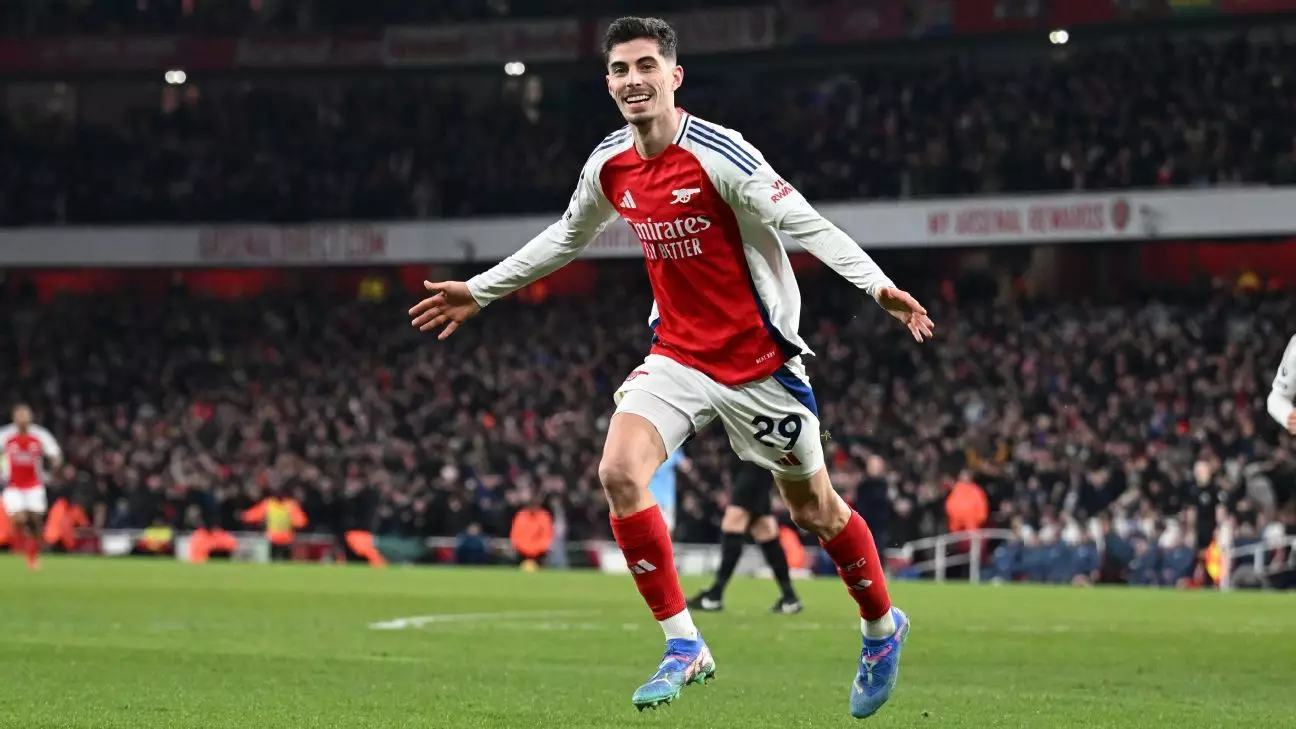Arsenal’s Premier League campaign is fraught with challenges, especially with the recent injuries to key players like Bukayo Saka and Gabriel Jesus. As the Gunners navigate through a demanding season, manager Mikel Arteta has put significant faith in Kai Havertz to step up in the absence of these critical forwards. This article delves into the dynamics surrounding Havertz’s pivotal role, the implications of squad injuries, and the strategic decisions facing the club’s management.
With Gabriel Jesus undergoing knee surgery meant to sidelined him for the remainder of the season, Arsenal finds itself at a crossroads. The team had been actively seeking a striker to bolster their attacking options during the January transfer window, even offering a £40 million bid for Aston Villa’s Ollie Watkins, which was ultimately rejected. This failure to reinforce the squad has put additional pressure on Havertz, who has already shown flashes of brilliance since his £65 million transfer from Chelsea. In the wake of such injuries, Arteta emphasizes the need for adaptability in his squad, which is where Havertz’s genetic robustness comes into play.
Described as a “genetic powerhouse” by Arteta, Havertz is not just physically impressive but also possesses the mentality required to thrive in high-pressure environments. His impressive work ethic and commitment to maintaining peak physical condition are qualities that Arteta appreciates deeply. Indeed, despite scoring 15 goals and assisting five times in this tumultuous season, Havertz’s critics have pointed out several crucial misses that could have altered the course of matches. This dichotomy between his undeniable talent and occasional lapses in finishing can weigh heavily on a player, particularly in a team striving for significant accolades.
Arteta seems undeterred by these criticisms, suggesting that Havertz is at his best when regularly involved in matches rather than sporadically rested. This insight highlights not only the trust the manager has in the player but also Havertz’s own willingness to shoulder the responsibility of carrying the team’s attacking threat, particularly as Arsenal competes on multiple fronts.
Strategic Leadership and Club Management
As Arteta rallies his troops on the pitch, equally pressing is the question of strategic leadership at the club. Following the resignation of Edu, Arsenal is in the process of appointing a new permanent sporting director, a move that is keenly anticipated by fans and analysts alike. The decision-making surrounding this appointment could significantly impact the club’s future direction, particularly as it relates to player recruitment and broader operational strategies.
Arteta has indicated that a shortlist of candidates has been prepared, signaling a proactive approach to ensure stability and continuity at the club. This behind-the-scenes maneuvering is pivotal, especially given the uncertainty regarding player signings and the challenge of maintaining squad depth. The dynamic between Arteta and the new sporting director—whoever it may be—will also dictate how Arsenal adapts to both short-term challenges and long-term aspirations.
Looking Ahead: How Will Arsenal Navigate the Season?
As Arsenal eyes potential silverware across competitions, the importance of key players like Havertz cannot be overstated. The coming weeks will be telling—can he maintain his physical conditioning and mental fortitude to lead the charge as the main attacking threat? Moreover, how effectively can the team adapt to the loss of Saka and Jesus while also assessing the long-term implications of their strategies off the pitch?
The narrative surrounding Kai Havertz exemplifies both the triumphs and trials of modern football. With managerial backing and an unwavering commitment to performance, he has the potential to emerge not just as a temporary solution but as a key figure who can redefine Arsenal’s ambitions this season. As the club works through its challenges, the spotlight will surely remain on both Havertz and the strategic decisions that shape the future of this historic club.

Leave a Reply